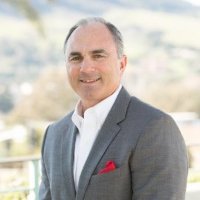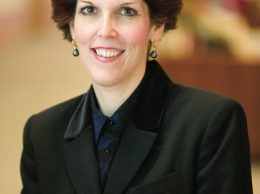
Gerry Frigon
By Gerry Frigon
A recent article by Anthony Mirhaydari, published in The Fiscal Times, wonders if the Federal Reserve is about to begin a “war on the rich.”
Mirhaydari cites Merrill Lynch Chief Investment Strategist Michael Hartnett, who appears to suggest that such is the case in his call for a “big top” in stocks sometime this autumn.
The article further suggests Hartnett advises investors to “Get back into big cap tech stocks for one final push higher, but prepare for the looming downside in stocks and upside in long term yields by reducing exposure to credit, buying volatility, and avoid emerging market debt and high yield.”
We couldn’t disagree with this line of thinking more vehemently.
Not that a correction in stocks may happen, it surely may. And suggesting it may happen in the autumn is no surprise given that autumn historically is the weak part of the year. But it is with the “trading” mentality and, most significantly, the view regarding the Fed’s influence that we take issue.
This view of the world — that the Fed is thoroughly responsible for what happens in the economy — is nonsense. These ideas are what contribute to volatility and poor economic performance, quite the contrary to what the author suggests.
The Fed was not responsible for the move in stocks. It was not TARP, QE, or anything government-related. These policies have only served to act as restraint on growth. Instead, it is corporate earnings, driven by the business community’s relentless ability to “get by in spite” that has driven markets higher and kept the economy growing, albeit very slowly.
Our view is that the Fed is behind the curve on tightening. It should have been tightening much sooner and that includes shrinking their balance sheet. The expansion of the balance sheet at the Fed (QE) has done nothing to help the market/economy in that those monies have sat idle on reserve at the Fed, paying banks interest instead of incentivizing them to lend.
QE was put into action in October 2008, in the midst of the “financial crisis.” After the November 2008 election, the market proceeded to drop another 30 percent. It was not until March 9, 2009 that the market bottomed, consistent with the timing of Congress putting a stop to the insane mark-to-market accounting rule that relegated banks illiquid (and perceived insolvent). QE has been a drag and will continue to be so until it is extinguished completely.
That said, looked at in the context of the 21st century, the market is not at all extended. It took years for the S&P 500 to cross back over the top it made in 2000 and even more years for the Nasdaq to do the same.
People with the view of the world described in this article seem to have this uncanny ability to think the world began March 9, 2009, the very bottom of the bear market. This is also nonsense. The series of “crises” that began with the dot.com blow up (and tech/telecom meltdown that followed), the Sept. 11 attacks, and the mortgage and credit crisis, confounded by horrific policies from two presidential administrations from both political parties, has served to stultify the economy, create a “perma-crisis” mentality, and generally keep a lid on growth.
If the current government is successful in reforming the tax code with simpler, lower/flatter rates, and continues to ease the excessive burden of government regulations on businesses large and most notably small, then the pace of growth will pick up and the Fed’s move to “lessen” its impact by eliminating QE and keeping rates at a level commensurate with the new, higher rate of economic growth will be further stimulative.
The main worry, in our view, is the Fed underwhelming with its attempt to get out of crisis mode. We shall see how this plays out, but should they even remotely be successful with this move, then many of our themes, which we believe have been held back by the policies of the last 15 to 20 years, will be unleashed in a much bigger way and be reflected in considerably higher prices. If not, and the old ways continue to dominate, then we will “get by in spite.”
• Gerry Frigon is president and chief investment officer at Taylor Frigon Capital Management in San Luis Obispo.






 Print
Print Email
Email

















